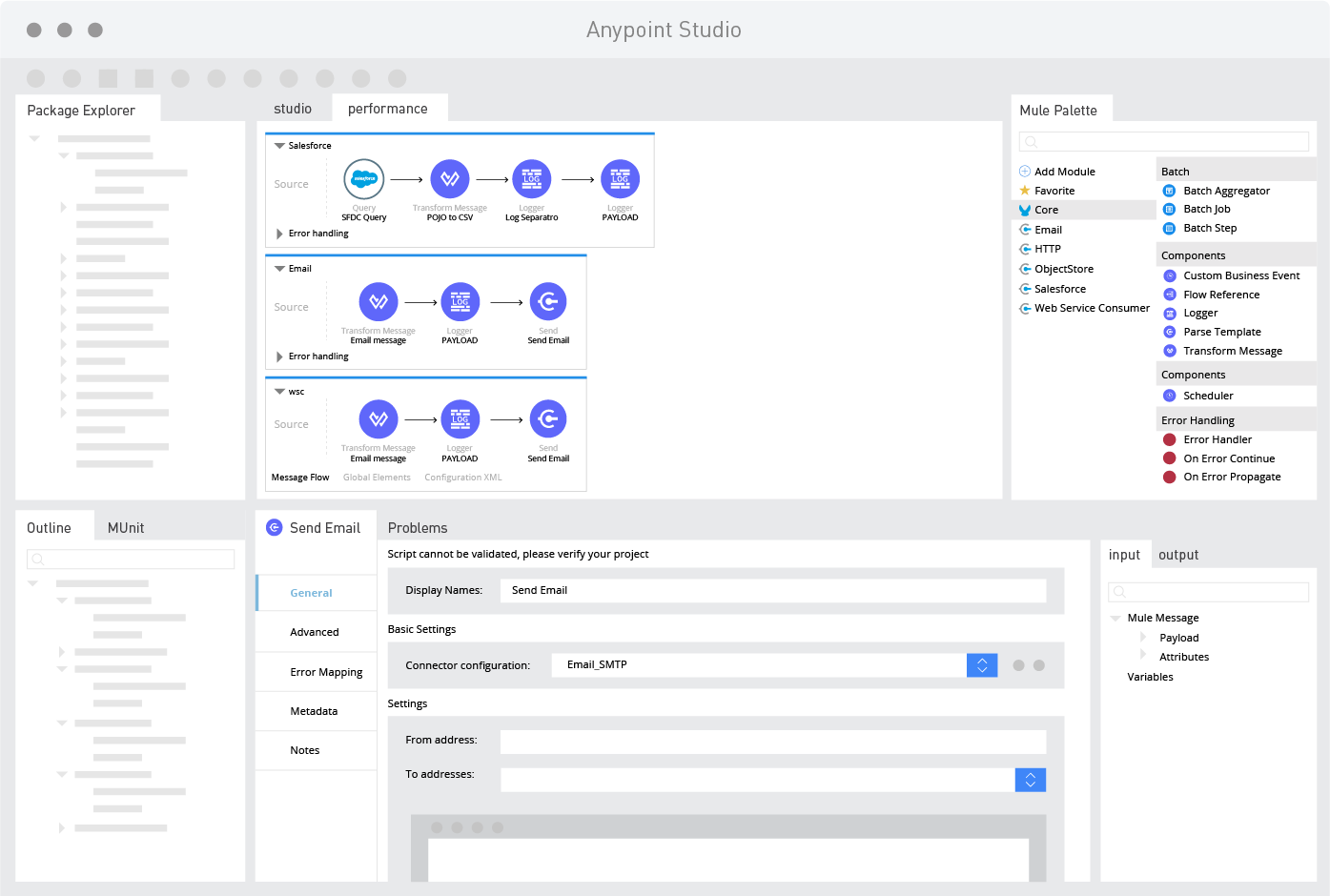This tutorial takes you through the process of configuring the Apache Maven build automation tool to integrate with Mule AnyPoint Studio.
- Download Anypoint Studio 7.6
- Mule Anypoint Studio Download Mac Installer
- Anypoint Studio Download Mac
- Mule Anypoint Studio Download
Join the DZone community and get the full member experience.
Join For FreeLab 3: Run the Mule app from Anypoint Studio; Module 4: APIs for Ad-Hoc Integrators. Anypoint Studio Download. Click in the following link to be taken to the. Download for PC. Download for Mac. How was the game made? Mule Invaders was built using the Unity game engine and written entirely in C#. The video game client polls our API Endpoint created in Anypoint Platform and listens for any updated value in the Object Store.
I hope many of you know how to use Maven with AnyPoint Studio, but I am still taking this step to teach those who aren't aware of this. To configure Maven to AnyPoint Studio, first we need to download it from the Apache Site.
Once downloaded, unzip the archive file into your C Drive if you are using Windows, or accordingly in your laptop or desktop based on your OS.
Then, go into the folder and see if the zip is correctly extracted or not, and locate the bin folder.
Then, add the bin folder to the PATH environment variable in OS accordingly in Windows or Mac.
Once it has been added to the environment variable, open a command prompt based on your OS.
Then run the mvn –v command to make sure that your Maven is configured correctly.
When you see the below in your command, it's done correctly.

In your computer's file explorer, navigate to the default location of the local Maven repository:
${user_home}/.m2/.
In Linux/Mac: ~/.m2 . In Windows: C:Users{yourUser}.m2.
You may need to enable viewing of hidden files and folders. If this folder does not exist, do not create it. It will be created automatically. This location will now be referred to as $M2 .
If the folder exists, drill-down and look for the repository subfolder: ${user_home}/.m2/repository . Leave this window open.
Configure Anypoint Studio to Use Maven
Open Anypoint Studio.
Open Anypoint Studio preferences.
Expand Anypoint Studio and click Maven Settings.
Check the three checkboxes for Maven preferences.
Download Anypoint Studio 7.6
If the Maven installation home directory is not set, browse to the location of your Maven.
Set a default groupId for new projects field to com.api.maventest.Click Test Maven Configuration and verify that the test passes.In the left-side navigation, expand Java.
Under Build Path, select Classpath Variables.
Verify that the JRE_LIB and JRE_SRC variables are pointing to a JDK and not a JRE.
Verify that there is an M2_REPO variable and that it is set to ${user_home}/.m2/repository. If M2_REPO does not exist, click New and create a variable called M2_REPO that points to your repository location: ${user_home}/.m2/repository.

Click OK.
You are all set with the configuration of Maven with Anypoint Studio.
Thanks for reading. In the next discussion, we will see how to create a Mule Project with Maven.
Opinions expressed by DZone contributors are their own.
Make sure that you have all of the prerequisites before starting the tutorial:
Mule Anypoint Studio Download Mac Installer
- Make sure that your system has the most recent JDK installed
- Install Maven on your local machine
To check to see if Maven is installed on your local system, type the following command into the Terminal:
mvn -v
If you don't have Maven installed, you can install it using Homebrew. Simply type: brew install maven
When Maven is installed, run the command: mvn clean install
This command should create a local .m2 cellar folder that contains your settings.xml file which contains global settings for all Maven executions. This folder should be located at $USER_HOME/.m2/ and the folder called repository holds all of the local copies of various Maven artifacts, either caches of artifacts pulled down from remote repositories, such as Maven Central, or artifacts built by your local Maven builds. The artifacts are organized in there in folder structures that mirror the groupId's of the artifacts.
In order to successfully build using Maven, you will have to create and/or modify your settings.xml file. To access that folder on Mac, go to Finder -> Go and type: ~/.m2
If the folder doesn’t appear for you, feel free to create it. You can manually create the file by typing and then pasting the code below:
touch ~/.m2/settings.xml
Make sure to input your Anypoint Studio credentials in your settings.xml file then save the file.
You may get the below error when attempting to build your project using Maven if your JAVA_HOME environment variables aren’t configured correctly.
To configure your environment variables, type:
export JAVA_HOME=/Library/Java/JavaVirtualMachines/jdk1.8.0_201.jdk/Contents/Home
Make sure that you match up your JDK version with the one that is currently installed on your machine. To find the JDK version you have installed, simply navigate to that folder in your Finder by going to Finder -> GO.
Anypoint Studio Download Mac
For Windows users, your .m2 folder is expected to be located under ${user.home} and you would see it under <root>Users<username>. The create a folder with the . prefix on Windows, simply go to Start -> Run, type cmd then in the command prompt type: md c:UsersYourUsername.m2
Mule Anypoint Studio Download
Now that your machine is all set up, make sure to create an Anypoint Platform account below and download Anypoint Studio.
